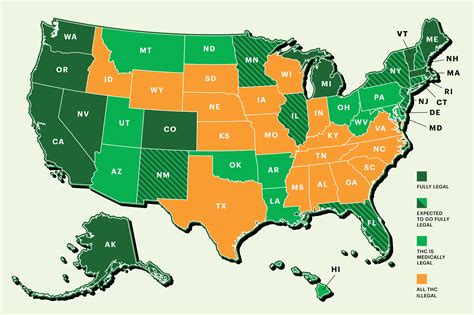The complex landscape of marijuana legislation in the United States reflects a growing policy gap between federal laws and state-level initiatives. Since California’s groundbreaking decision in 1996 to allow medical marijuana, over half the states, along with the District of Columbia, Guam, Puerto Rico, and the U.S. Virgin Islands, have legalized marijuana for medical purposes. Additionally, the trend toward legalizing marijuana for non-medical adult use is gaining momentum. Despite these state-level changes, marijuana remains illegal under federal law.

The initial legal use of cannabis in the U.S. dates back to the 1800s, primarily for therapeutic applications. However, with the advent of synthetic painkillers and increasing concerns over cannabis-related violence, Congress banned recreational cannabis use in 1937, severely restricting its medical accessibility. The recent shift in state legislation, however, indicates a significant departure from these historical stances.
Despite these state-level advancements, federal law continues to classify marijuana as a Schedule I controlled substance, making all activities involving marijuana federally illegal. This dichotomy creates a complex legal landscape, as states cannot alter federal law. The Department of Justice, while not fully endorsing these changes, has largely allowed states to implement their own marijuana laws.
In a significant development, President Biden announced a pardon for all prior federal offenses of simple possession of marijuana, signaling a potential shift in federal policy. This announcement aligns with public health concerns and the need for better understanding of marijuana’s impact, as highlighted by the Centers for Disease Control and Prevention (CDC). The CDC emphasizes ongoing research to grasp the public health implications of marijuana use, which was reportedly used by an estimated 48.2 million people in the U.S. in 2019.
The National Institute on Drug Abuse also acknowledges the changing landscape of marijuana policies, emphasizing the importance of understanding both the potential therapeutic benefits and adverse health effects of marijuana use.
This evolving scenario reflects the growing acceptance of marijuana in American society and poses significant challenges and opportunities for both policy makers and public health professionals. As the federal and state laws continue to diverge, the future of marijuana legalization and its societal impact remains a topic of significant debate and interest.
CRS Reports
Centers for Disease Control and Prevention
Cannabis legalization in the US
United States Congressional Joint Statement
President Biden on Marijuana Reform
Medical Marijuana and Marijuana Legalization – PMC
Marijuana and Public Health – CDC
Recent Developments in Marijuana Law – CRS Reports
Frequently Asked Questions – CDC
Letter From the Director | National Institute on Drug Abuse